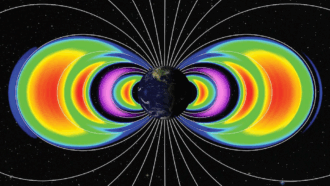Get ready for the 2024 total solar eclipse
The eclipse will race across North America on April 8, providing a rare opportunity for scientists and casual observers
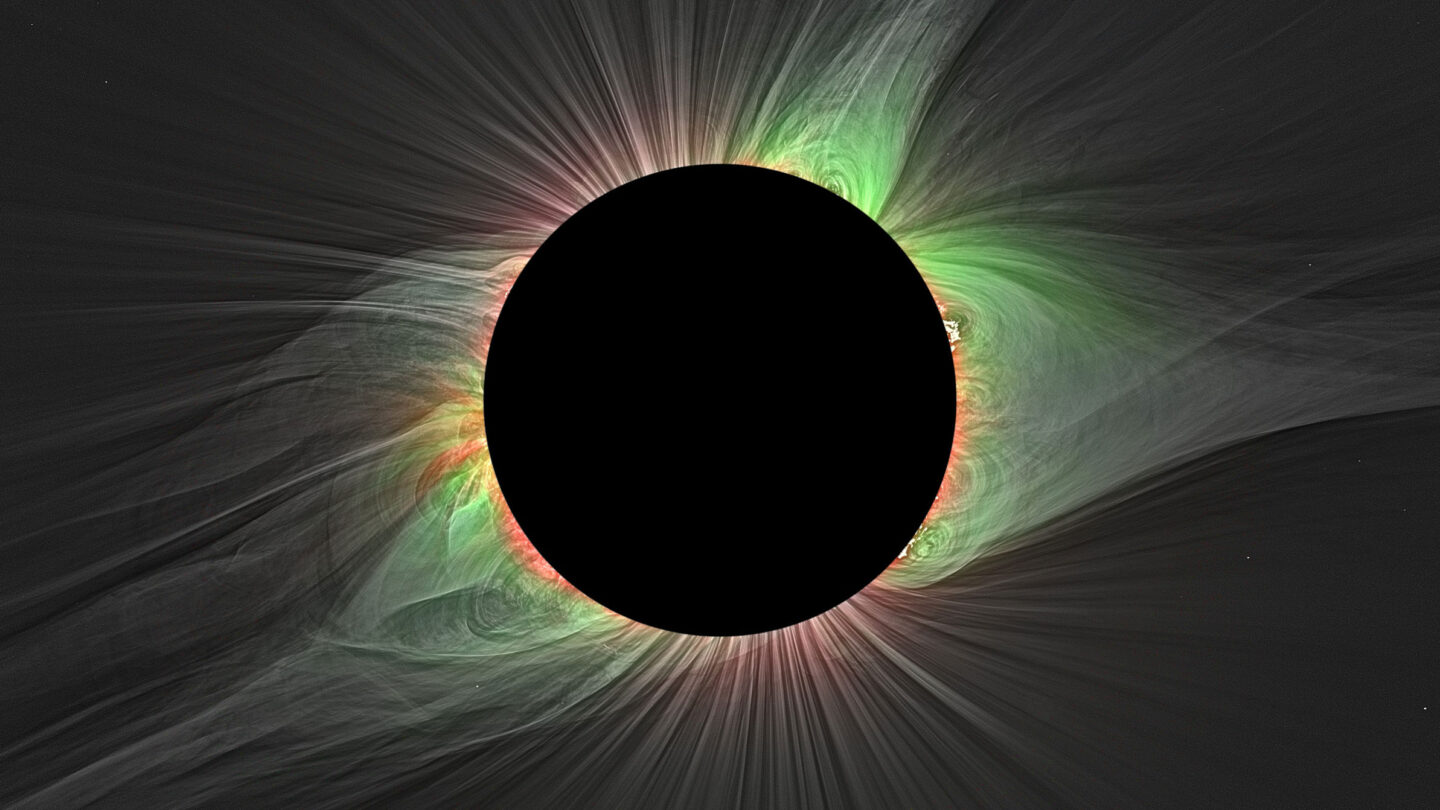
The total solar eclipse in 2017 (photographed by scientists with a special filter) was great. This year’s eclipse is expected to be even more spectacular.
Image produced by M. Druckmuller and published in Habbal et al. 2021
Share this:
- Share via email (Opens in new window) Email
- Click to share on Facebook (Opens in new window) Facebook
- Click to share on X (Opens in new window) X
- Click to share on Pinterest (Opens in new window) Pinterest
- Click to share on Reddit (Opens in new window) Reddit
- Share to Google Classroom (Opens in new window) Google Classroom
- Click to print (Opens in new window) Print
Solar eclipses are dramatic events, as a rule. The moon moves between the Earth and the sun to block out our star. For a few minutes, the world around you will go eerily dark. But the total eclipse coming on April 8 is going to be more special than usual.
The last total eclipse crossed the United States in 2017. It was a spectacle witnessed by millions. Maybe even you. But this year’s total eclipse will last longer. The sky will fall darker. The sun itself will put on a much livelier show. And even more people will be able to step outside their front doors to see one of the most astounding astronomical events of their lives.
It will also be the last major eclipse to cross North America for 20 years. All of that makes for an especially rare opportunity for casual observers and scientists alike. Here are a few things to know about this event.
Why will this eclipse last longer?
The moon’s orbit isn’t a circle. There are times when it’s closer to Earth than others. During the April 2024 eclipse, the moon will be at a point in its orbit that’s comparatively near to Earth. That will make the moon appear especially large.
For anyone fortunate enough to make it to the path of totality — where the moon completely blocks out the sun’s disk — this will be an especially dark eclipse. And it will last nearly 4.5 minutes. That’s almost two minutes longer than the Great American Eclipse of 2017.
What’s more, the sun is close to solar maximum in 2024. That’s the peak of its roughly 11-year activity cycle. As a result, lots of bright, petal-like streamers of plasma will extend from the solar corona. This is the sun’s outer atmosphere. The increase in solar activity also ups the chances of a coronal mass ejection, or CME. This is a large puff of hot gas that’s been trapped by a magnetic field into a loop and blasted away from the sun’s surface.
A longer time to observe the eclipse and a more active sun will make for a better show.
It will also be a boon for scientists. They now have more telescopes, sensors and satellites than ever available to study the sun. Using special eclipse glasses, even non-scientists should be able to see the streamers and a CME, if one occurs. (Eclipse glasses are a necessity to safely view the eclipse. Your school or local library might give them away for free. Or you can order them online.)
Do you have a science question? We can help!
Submit your question here, and we might answer it an upcoming issue of Science News Explores
What’s different about this eclipse’s path?
In April 2024 “there’s nearly 32 million people [who will be] inside the path [of totality],” says Michael Zeiler. That’s about 2.5 times as many as during the 2017 eclipse. And “the major East Coast metros from Baltimore [Md.] to Boston [Mass.] are all about 200 miles [320 kilometers] from the path of totality.”
So the path of totality is going be very accessible to much of the U.S. population, says Zeiler. He’s a cartographer and founder of the website GreatAmericanEclipse.com. The eclipse will be visible to some degree in every U.S. state. People in portions of northwestern Mexico and southeastern Canada also will be able to see it.
The 2024 eclipse path will be helpful for researchers who use radar to study charged particles high in the atmosphere. That’s according to space scientist Bharat Kunduri of Virginia Tech in Blacksburg. The path of this eclipse passes within the observing range of three radars in the worldwide Super Dual Auroral Radar Network. That wasn’t true for the last two North American eclipses.
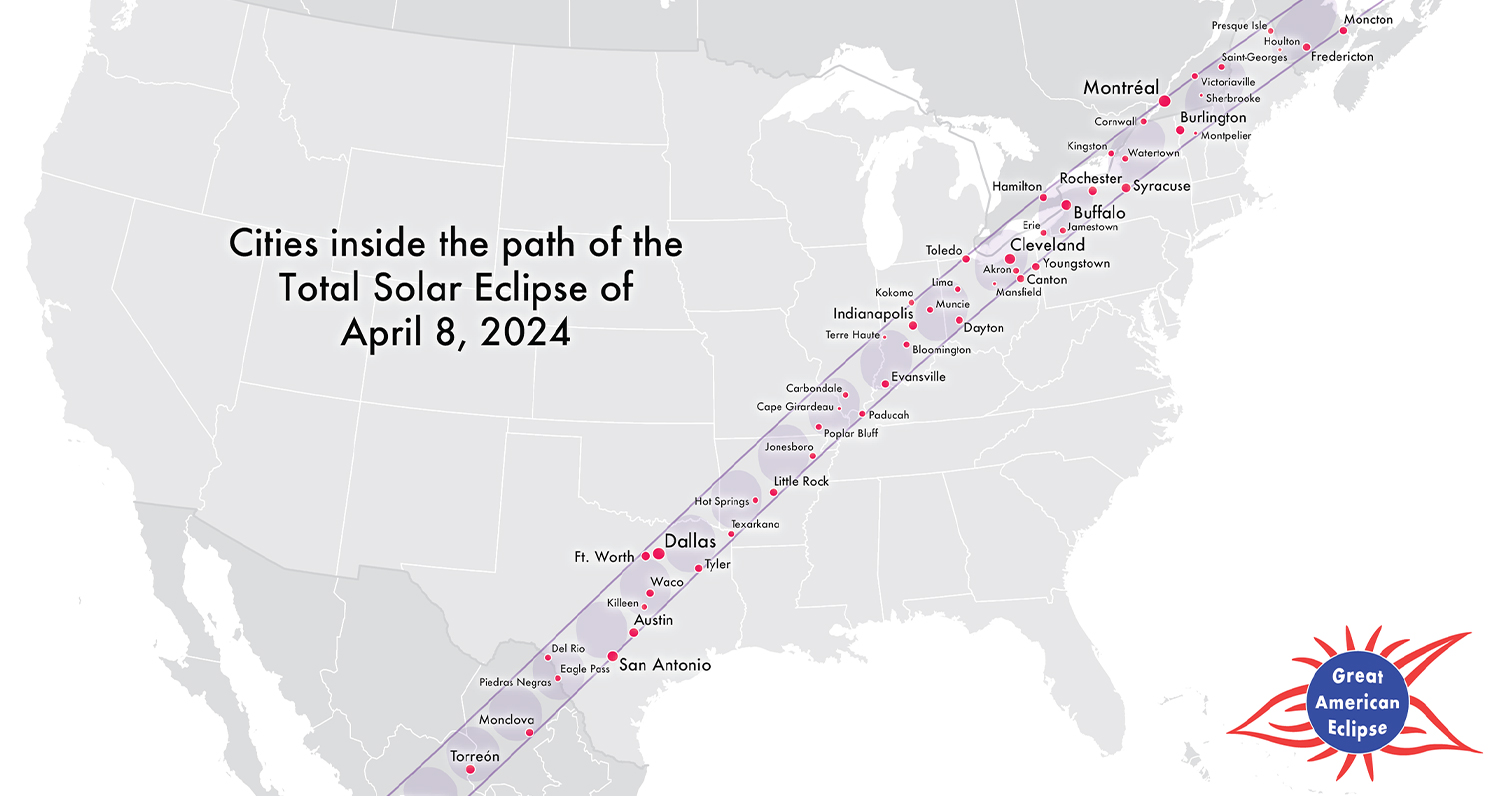
Those radars monitor a gas-like plasma of positively charged atoms and negatively charged electrons in Earth’s atmosphere. The sun’s rays kick electrons off atoms to create this plasma. It makes up a layer around our planet called the ionosphere. This can act like a mirror for radio signals. It causes those signals to bounce from terrestrial transmitters back down to receivers, instead of letting the signals head out into space. That extends the range of those transmitters.
The ionosphere also alters the transmission of signals down to Earth from GPS satellites. Taking that effect into account is crucial for ensuring that GPS systems are accurate.
During a solar eclipse, as at night, all radiation from the sun goes away. The atmosphere becomes a little less dense and less ionized. “And radio waves can behave differently,” Kunduri says. Using the instruments in the radar network during an eclipse can help scientists better understand how the sun generates the ionosphere. It also can help them learn how the plasma layer affects transmissions from satellites and radios.
An eclipse “gives you an excellent opportunity to study what happens when there is a sudden change in the upper atmosphere,” he says.
What’s unique about this chance to spot a CME?
Two satellites will be looking at the sun from the side while the eclipse is happening. These are the European Space Agency’s Solar Orbiter and NASA’s Parker Solar Probe. Because of the sun’s elevated activity during this eclipse, chances are very high that those satellites and ground-level eclipse observers can study a CME at the same time.
Ground-based observers would be able to watch a CME traveling out from the sun. The satellites, meanwhile, would see the event head on — if they happen to lie in the path of an ejection. They might even be able to take samples as the solar material goes blasting past. It’s the only time in the lifetimes of the two satellites that they’ll be aligned like this during an eclipse at solar maximum.
“If we would be so lucky to have [a CME],” says Nour Raouafi, and it’s “propagating toward the spacecraft … it will be fascinating to see it during a total solar eclipse.” Raouafi is an astrophysicist at Johns Hopkins Applied Physics Laboratory in Laurel, Md.
Scientists want to know more about CMEs because, when aimed at Earth, these solar eruptions can disrupt communications and power grids. They also can threaten satellites or astronauts orbiting Earth.
In addition to observing any ejection, the satellites’ observations could help confirm the source of very speedy solar winds. These seem to be accelerated by kinks that develop in magnetic fields near the sun’s surface.
Insights into the solar wind, in turn, will provide a greater understanding of how CMEs can affect Earth, says Raouafi. That’s because the ejections pile up material in the solar wind. This “will affect the arrival time of these events to Earth. So, knowing the conditions of the solar wind before the [ejections] is extremely important to predict when they are arriving or how important they will be.”
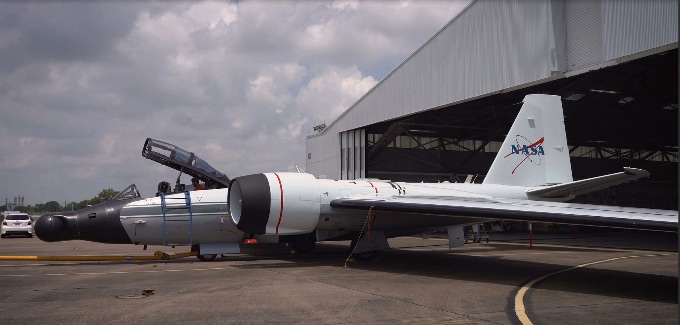
How will scientists study this eclipse?
Several experiments planned for 2024 are repeats from past eclipses. Some feature updated instruments. Others will benefit from viewings gathered while the sun is near its solar max. This will let scientists make comparisons with the quieter phase that the sun was in during the 2017 eclipse.
And all of the 2024 experiments should benefit from the increased data quality and quantity that comes with a longer viewing time.
Take the WB-57F jet planes that carried instruments to observe the 2017 eclipse while flying along its path of totality. They will be in the air again in April, says Amir Caspi. He is a physicist at the Southwest Research Institute in Boulder, Colo. “It’s a big improvement because we’re flying new instruments [that provide] better information. The fact that it’s solar maximum will give us a lot more things to look at.”
Improved cameras and spectrometers, for example, will offer detailed views of the corona close to the sun’s surface. The corona is the outer, bright layer of the sun’s atmosphere. It’s the only part of the sun that’s visible during totality.
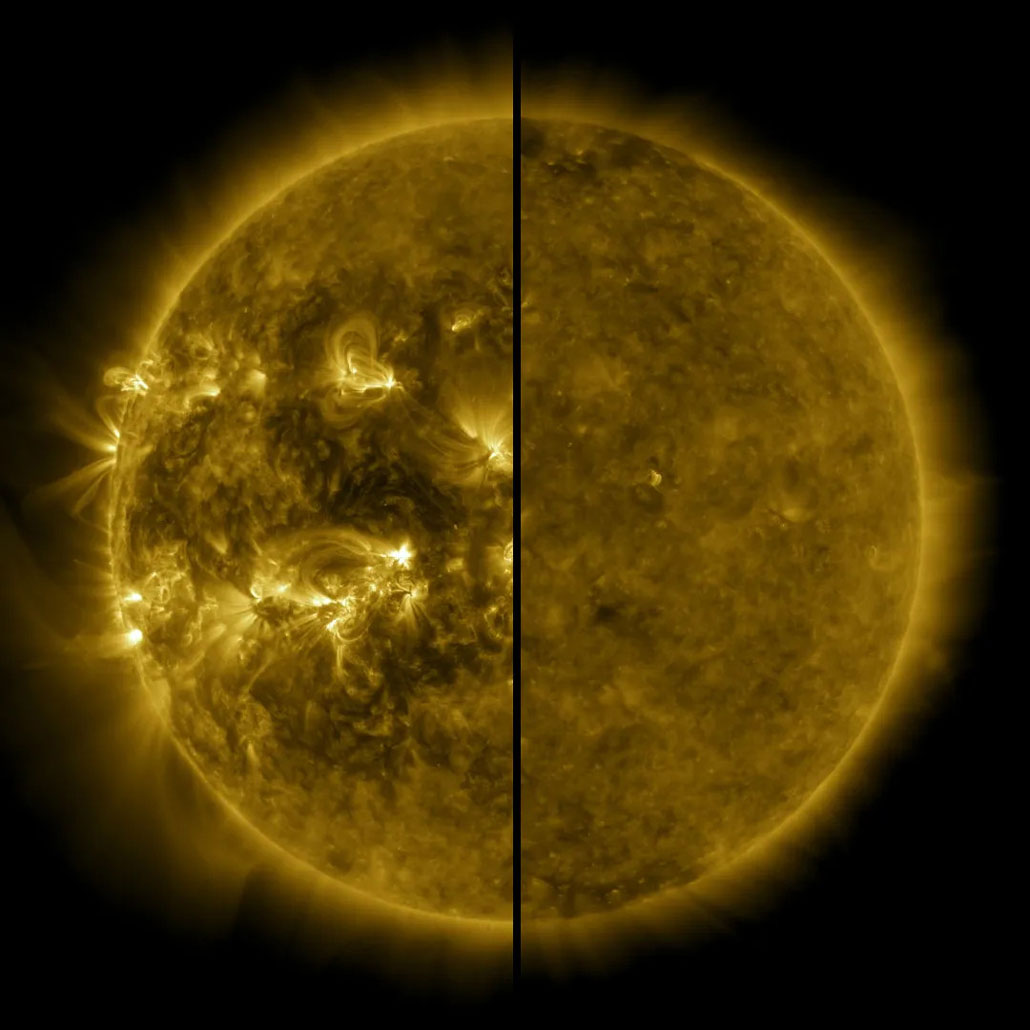
“This eclipse is also twice as long as the last one. “In the air, we’re going to get 6.5 minutes per airplane” — two minutes longer than will be available from the ground. Planes can’t travel fast enough to keep up with the moon’s shadow during an eclipse. But they can travel fast enough to extend the time they spend in totality.
If all goes well, he says, they could also discover some asteroids thought to exist within the orbit of Mercury. Those asteroids are difficult to detect without the moon blocking the sun’s glare.
Shadia Habbal is an astronomer at the University of Hawaii in Honolulu. She leads a team that will fly updated cameras and spectrometers on the jets as well. She’s also setting up ground-based observations at sites in Mexico, Texas and Arkansas.
Habbal is even planning to send a spectrometer 4 kilometers (2.5 miles) aloft on a kite from a location near Kerrville, Texas. The kite will get above any clouds that might block views of the sun. The spectrometer collects light from the sun to determine the composition of material in the corona. “There are changes in the corona that occur on time scales of seconds to minutes to hours,” she says. “So the longer duration [of the eclipse] also enables us to capture [more] time-variable events and their impact on the corona and solar wind.”
Other repeat experiments include weather balloons that will measure waves of pressure in the atmosphere that ripple away from the passing shadow of the eclipse. And a newly redesigned spectrometer will ride aboard a Gulfstream jet chasing the eclipse over Texas.
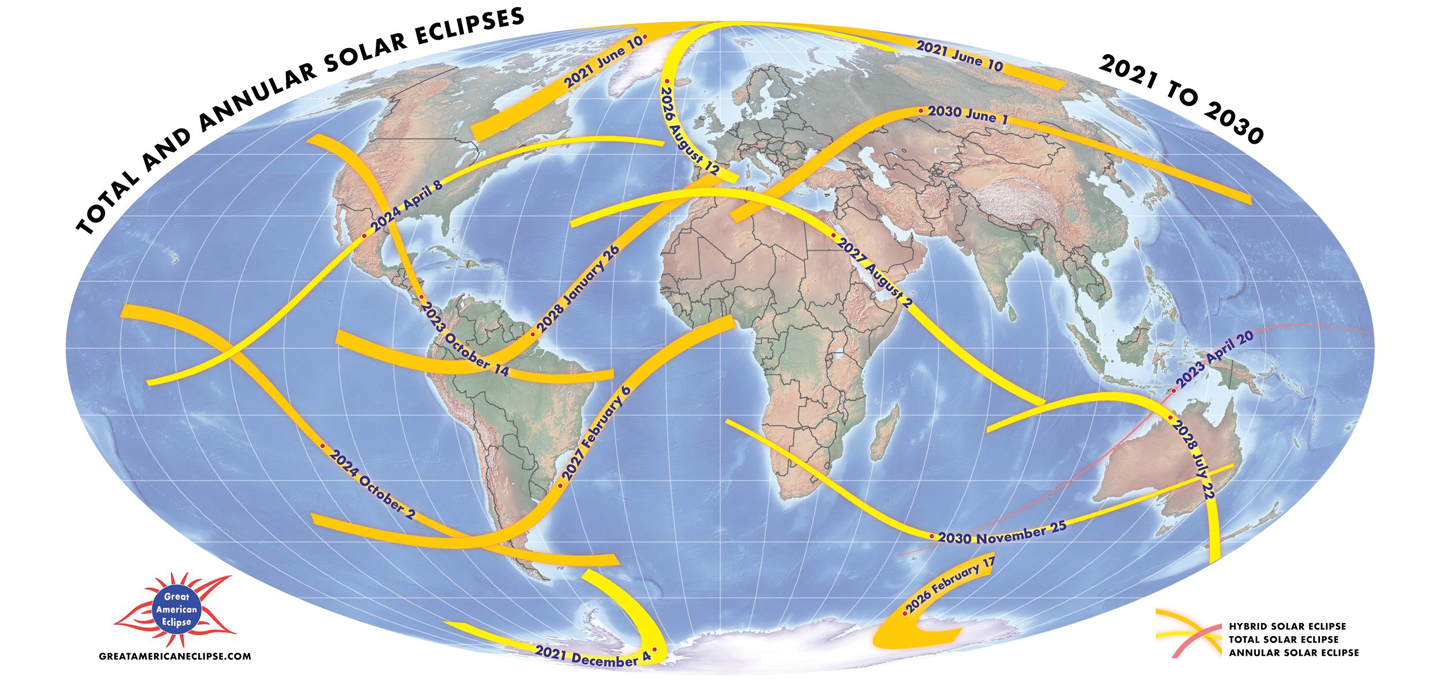
Looking forward
Alaska has the worst seat in the house, as far as U.S. states go. Only a sliver of the state lies in the range that will see a portion of the sun covered up during the eclipse. And no site there is in totality. But the state will get an exclusive viewing when another eclipse crosses the western side of Alaska in spring 2033. That’s it for North America until an eclipse passes primarily over Canada in 2044. Then another will cross the United States and eastern South America in 2045.
The astronomical event on April 8 will be both livelier and longer than many eclipses. But Habbal says that it doesn’t diminish the importance of studying other eclipses. “Every total solar eclipse yields new discoveries.”
This one, though, is probably an astronomical event you won’t want to miss.
